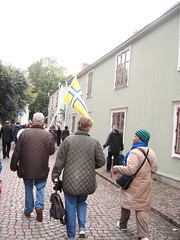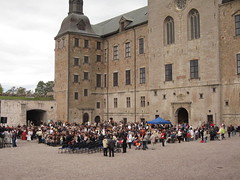
The Chief Executive of Shelter has written an article in today's Guardian about the housing crisis and the need to build more.
It is not a crisis. The situation has been much the same since the end of World War 2. The problem is chronic. Houses are affordable. What is not affordable is the land the houses stand on. Land value taxation is an essential element in any solution to this.
But where are all these new houses going to go? And if they were all built, how would their occupants get to work? And where would their children go to school? And what about all the other services they will need? The problem cannot be considered in isolation.
A major factor in all this is regional imbalance. 85% of the UK population live within an area bounded by Leeds, Dover, Bournemouth, Bristol, Birmingham and Liverpool - about one third of the total land area. And most of that within a 100 mile circle centred on Oxford. This is due to decades of economic mismanagement. A major factor is our tax system which ignored the benefit of location. Thus, fringe areas such as Devon and Cornwall, and most of Britain north of Manchester, are marginalised, as the higher costs of production in those areas, due, eg to transport, are not compensated for in any way. So the drift to the South East goes on as it has for the past fifty years.
To keep on building houses in London and the South East is not a policy. A policy must include tax reform so that the amount paid reflect location value - ie land value taxation again, which effectively creates tax havens precisely where they are most needed. This will help to redress regional economic imbalance and revive those parts of Britain remote from London and the South East.
And it need major infrastructure improvements such as a new high speed rail link with full size trains (not the mini-trains they run at the moment), a shift of freight on to rail and urban light rail/tramway schemes to provide adequate feeder for long distance travellers. And land value taxation must be part of the policy for infrastructure improvements, because without it, the benefits of the enhanced values are just picked up by landowners who happen to win out and the Treasury has to fork out but gets little in return.
The issue is one of land use and fiscal planning. And it also needs vision, a commodity that seems to be in short supply in the UK at the moment.
It is alarming that the Chief Executive of Shelter does not appear to appreciate the big picture which forms the background to the problem they are concerned with. Really, one despairs.
I look around me in Scandinavia and see that people generally are enjoying a markedly higher quality of life than in the UK, both in their own private spaces and in the public environment. Yet these are poor countries with small populations on the fringe of Europe. If they can afford it then the big wealthy UK can.












